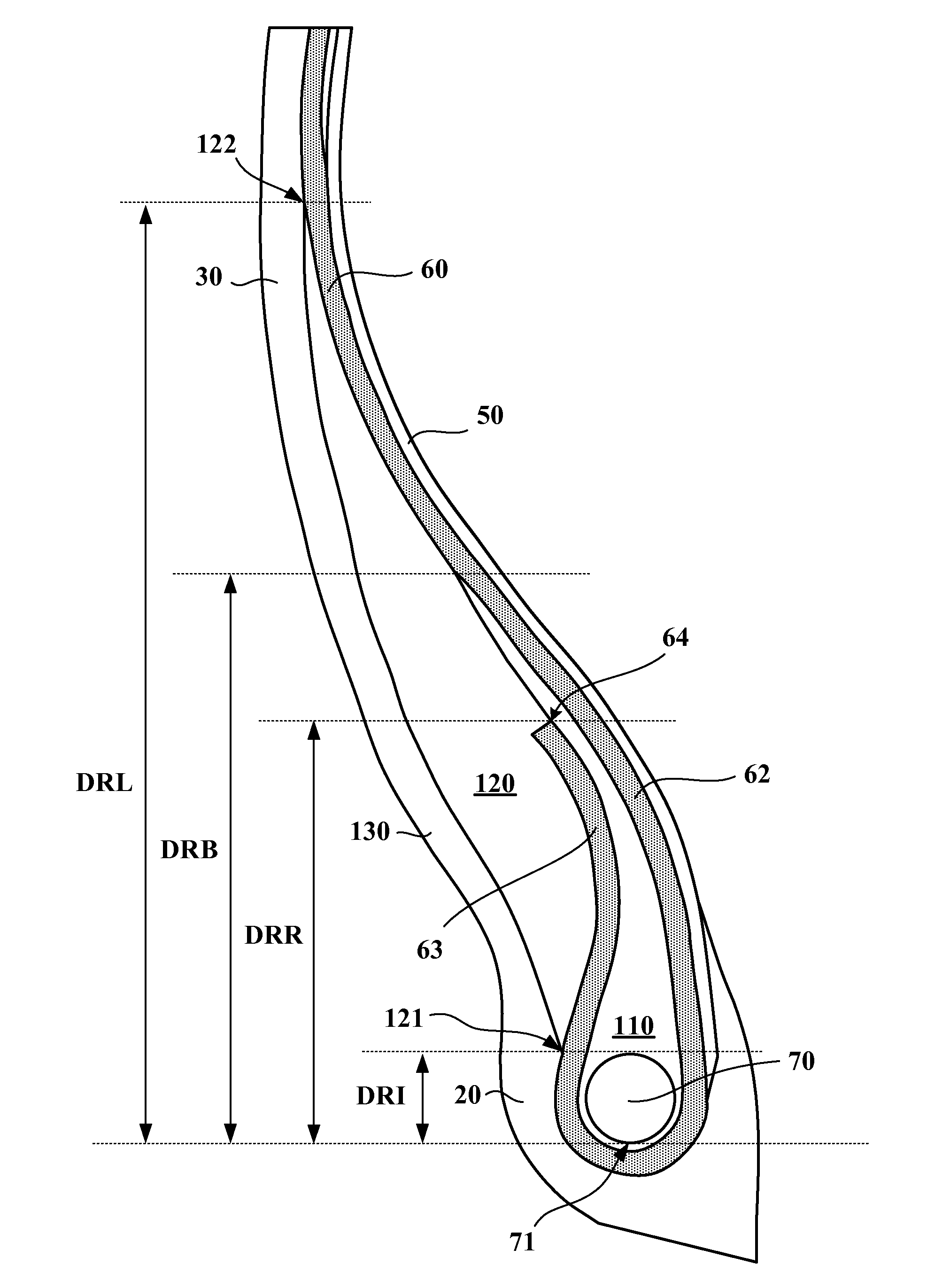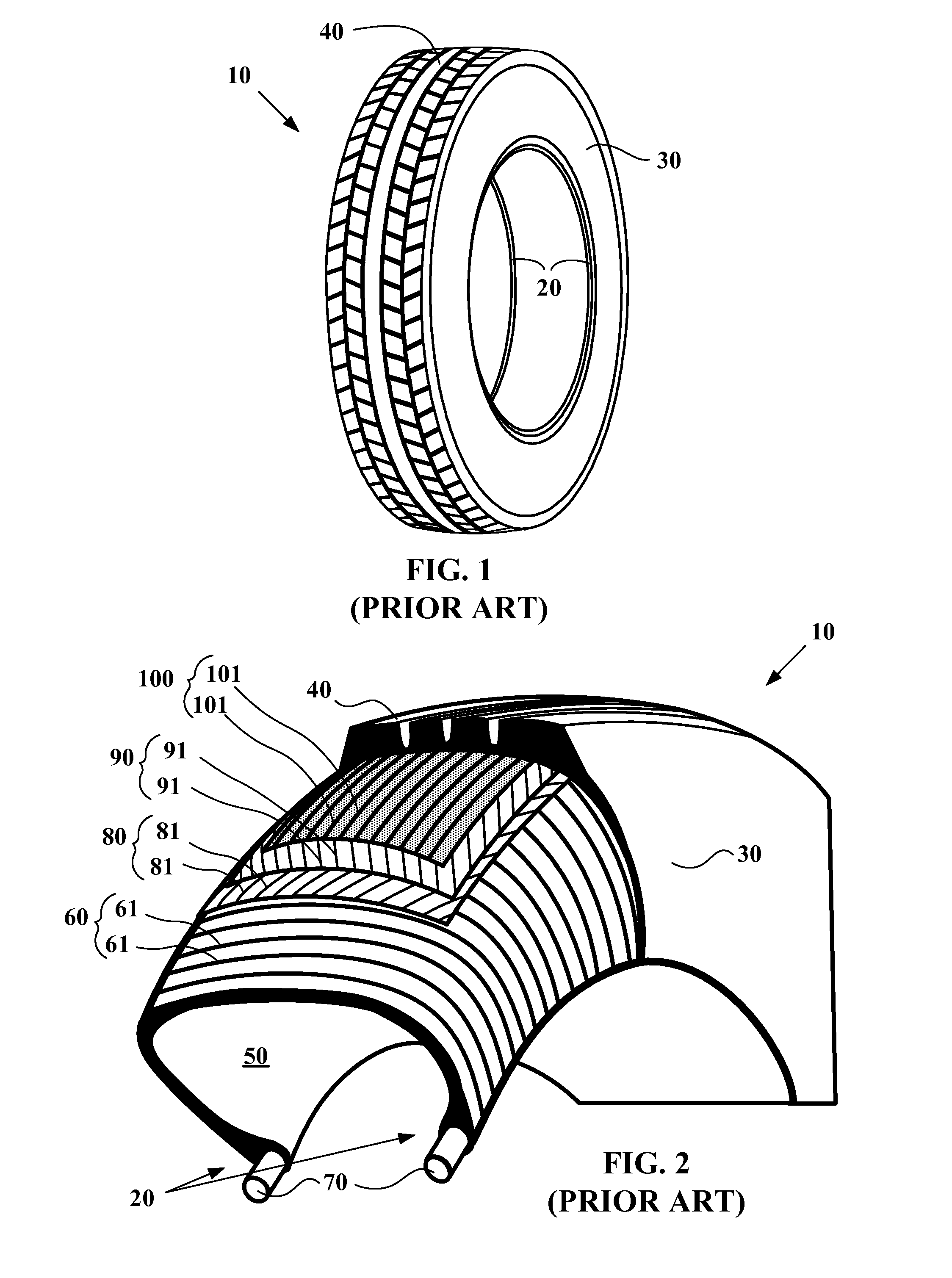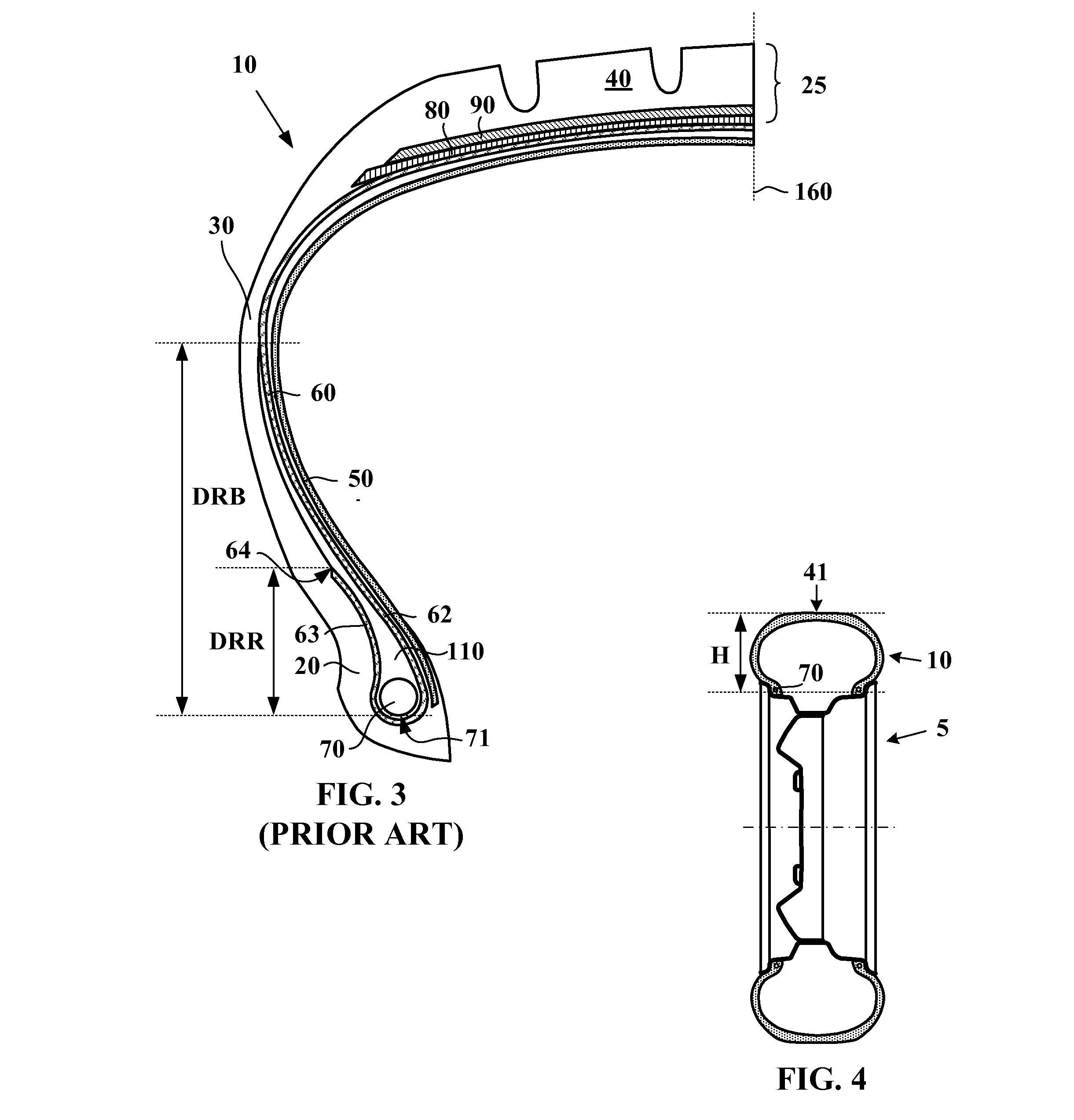Tire with improved beads
a technology for passenger vehicles and tires, applied in the field of passenger vehicle tires, can solve the problems of difficult to prevent rubber from moving while tires are being cured, high proportion of tires that fail to meet specifications, and high rolling resistan
- Summary
- Abstract
- Description
- Claims
- Application Information
AI Technical Summary
Benefits of technology
Problems solved by technology
Method used
Image
Examples
Embodiment Construction
[0042]It is appropriate to distinguish several different uses of the term “radial” by those skilled in the art. Firstly the expression refers to a radius of the tire. It is in this sense that a point P1 is said to be “radially inside” a point P2 (or “radially on the inside of” the point P2) if it is closer to the axis of rotation of the tire than is the point P2. Conversely, a point P3 is said to be “radially outside” a point P4 (or “radially on the outside of” the point P4) if it is further away from the axis of rotation of the tire than is the point P4. Progress is said to be made “radially inwards (or outwards)” when progressing towards smaller (or larger) radii. Where radial distances are involved, it is this sense of the term that applies also.
[0043]By contrast, a thread or reinforcement is said to be “radial” when the thread or the reinforcing elements of the reinforcement make an angle greater than or equal to 80° and less than or equal to 90° with the circumferential directi...
PUM
 Login to View More
Login to View More Abstract
Description
Claims
Application Information
 Login to View More
Login to View More - R&D
- Intellectual Property
- Life Sciences
- Materials
- Tech Scout
- Unparalleled Data Quality
- Higher Quality Content
- 60% Fewer Hallucinations
Browse by: Latest US Patents, China's latest patents, Technical Efficacy Thesaurus, Application Domain, Technology Topic, Popular Technical Reports.
© 2025 PatSnap. All rights reserved.Legal|Privacy policy|Modern Slavery Act Transparency Statement|Sitemap|About US| Contact US: help@patsnap.com



